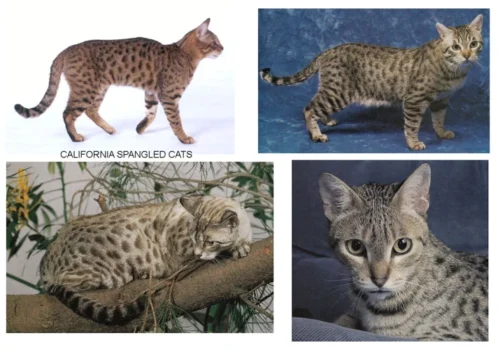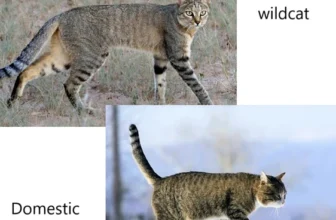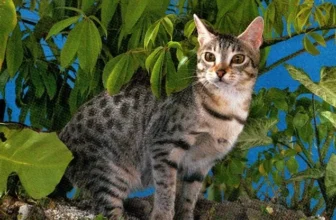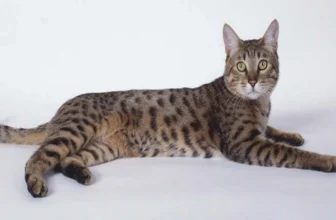The California Spangled breed is fascinating due to its striking spots and fascinating ancestry. There is a certain mystique around these cats that prompts curiosity. One cannot help but wonder about the genetics and influences that went into creating this unique breed. In this article, we will explore the history, importance of genetics in breeding, wild cat ancestry, and the influence that wild cats have had on the California Spangled breed. By the end of this article, you will have a deeper understanding and appreciation for these beautiful creatures. So, let’s dive in!
The History of the California Spangled Breed
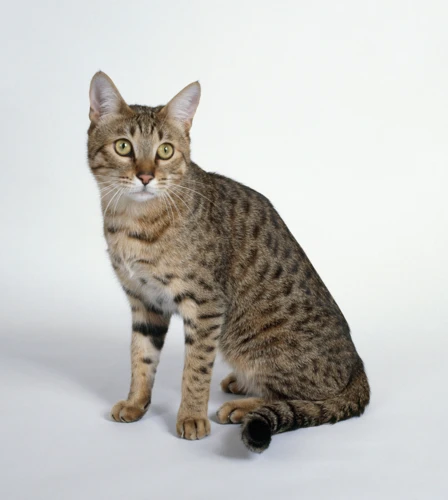
The California Spangled Breed is one of the most interesting and unique feline breeds in existence today. In this section, we will delve into its history and learn about the factors that have influenced the breed’s development over time. From the creation story and its popularity, to the decline in its population, and its eventual resurgence, we will explore the rich history of the California Spangled Breed. Read on to discover how this breed has evolved over time and how it has been shaped by wild felines. You can also check out the article on the history of California Spangled Cats to learn more.
The Origins of the Breed
The California Spangled breed was created in the 1980s by Paul Casey, a Hollywood scriptwriter and animal enthusiast. He aimed to breed a unique domestic cat that resembled a wild leopard, but with a loving and affectionate temperament. To achieve this, he crossbred several domestic cat breeds, including American Shorthairs, British Shorthairs, and Abyssinians, with the wildcats. The end result was the California Spangled breed, known for its striking appearance and playful personality.
However, the origins of the breed can be traced back to the late 1970s, when Casey became increasingly concerned about the endangered status of wildcats around the world. He was inspired to create a domestic cat breed that would raise awareness about the plight of their wild counterparts while providing a companion animal that was not only visually appealing but docile and affectionate.
To create this new breed, Casey wanted to use only domestic cats because he believed that people would be more likely to adopt them than the wildcats. He chose the British Shorthair, American Shorthair, and Abyssinian as the basis for the California Spangled breed. These cats were selected for their physical characteristics and temperaments, which he felt were similar to those of wildcats. For instance, he chose the British Shorthair for its round face, thick neck, and muscular body, which made it look like a wildcat. He also chose the Abyssinian for its slim and sleek appearance and the American Shorthair for its well-balanced body and powerful muscles.
After breeding the cats together, Casey began to notice physical characteristics that resembled wildcats. He selectively bred the cats that had the most “wild” phenotype and created a distinct breed of domestic cat. To promote the breed, he worked with a PR firm to place the cats in high-profile magazines, such as Vogue and Vanity Fair, and on television shows like Dallas and Dynasty. Unfortunately, despite initial success, the breed’s popularity declined towards the late 1980s and eventually became nearly extinct.
Today, the California Spangled breed is making a comeback, thanks to a small group of dedicated breeders who want to maintain this unique cat’s genetic heritage and popularity. They are working hard to ensure that this endangered breed doesn’t disappear, and have even developed a new breed registry, the California Spangled Cat Association, to protect its genetic diversity. The story of this remarkable breed is one of perseverance and commitment to preserving the unique qualities that make it special.
For more on the creation of the California Spangled breed, read this article.
The Popularity and Decline of the Breed
In the 1970s, the California Spangled breed gained popularity among cat enthusiasts due to its unique and exotic look. The breed was known for its wild appearance, athleticism, and intelligence. At the time, the demand for purebred cats was also on the rise, which resulted in many breeders trying to meet the demand for this new and exotic breed.
However, due to the high cost of breeding and the limited number of breeders, the California Spangled breed began to decline in popularity in the 1980s. Breeders could not keep up with the high demand while also maintaining the breed’s unique characteristics. As a result, the breed became increasingly rare and many breeders shifted their focus to other breeds that were easier to produce.
By the mid-1990s, the breed was near extinction and was no longer recognized by major cat associations. The decline of the breed was also attributed to its expensive price tag, as well as the increasing popularity of rescue cats.
Despite this decline, the California Spangled breed was saved from extinction by a few dedicated breeders who continued to breed and promote the breed’s unique characteristics. In recent years, there has been a resurgence of interest in the breed as cat enthusiasts begin to appreciate its exceptional athleticism, intelligence, and distinct appearance.
The popularity and decline of the California Spangled breed was a reflection of the challenges facing many purebred cat breeds. While breeding cats that possess desirable traits is important, it is also vital to maintain genetic diversity to avoid genetic disorders and health issues. To learn more about the history and genetics of this breed, check out our article on the influence of wild cats on the California Spangled breed.
The Resurgence of the California Spangled Breed
In the 1980s, the California Spangled Breed was at risk of becoming extinct due to a lack of interest from cat breeders and prospective owners. However, the breed experienced a resurgence in the 1990s thanks to the efforts of Paul Casey, a Hollywood writer and producer who had owned a California Spangled Cat named “Dietrich.”
The Contribution of Paul Casey to the Resurgence of the California Spangled Breed
Inspired by the beauty and elegance of his own California Spangled Cat, Paul Casey saw the potential for the breed to make a comeback and began championing its cause. Casey used his influence in Hollywood to promote the breed in popular culture, and he wrote a screenplay that featured the California Spangled Cat as the protagonist. His efforts paid off, and the breed gained a following among cat lovers and celebrities alike.
The Role of Celebrities in Popularizing the California Spangled Breed
Celebrities such as Steven Spielberg, Michael Jackson, and Barbra Streisand lent their support to the California Spangled Cat breed, further increasing its popularity. The breed was featured in magazines such as Vogue and Vanity Fair, bringing it to the attention of people around the world.
The Reintroduction of the Breed to Cat Shows
In addition to the efforts of Paul Casey and the celebrity endorsement of the breed, the California Spangled Cat made a return to cat shows in the 1990s. This allowed breeders to showcase their cats and demonstrate why the breed was unique and desirable.
The Ongoing Popularity of the California Spangled Breed
Today, the California Spangled Breed is once again thriving, with a growing number of breeders and enthusiasts. However, the breed is still rare, and its population is relatively small compared to other breeds. Nevertheless, the breed has found a place in the hearts of cat lovers who appreciate its beauty, intelligence, and unique wild cat ancestry.
The Importance of Genetics in Cat Breeding
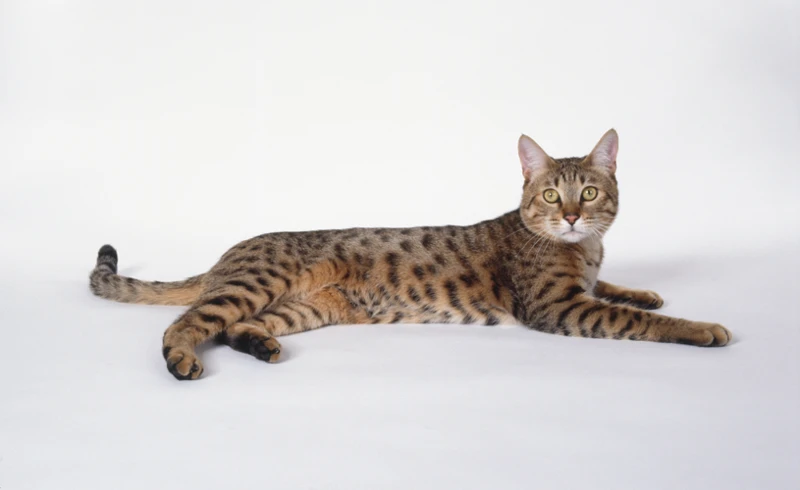
Breeding cats is a complex process that requires careful consideration of genetics. Understanding the genetic makeup of a breed is essential to produce healthy and desirable characteristics in offspring. The genetics of a cat breed determine everything from physical traits to personality and health.
One of the most important aspects of genetics in cat breeding is the role of recessive and dominant genes. Dominant genes are those that always express themselves in an individual, while recessive genes only do so when an individual has two copies of the same gene. This means that if a cat has one dominant and one recessive gene for a trait, the dominant gene will be expressed. However, if the cat has two recessive genes for a trait, that particular characteristic will be exhibited.
Another crucial aspect of genetics in cat breeding is genetic diversity. Inbreeding can lead to a decrease in genetic diversity, which can result in health problems and undesirable traits. Breeders must work to maintain genetic diversity by carefully selecting breeding pairs and avoiding inbreeding.
Genetic testing is an essential tool for cat breeders. Breeders can use genetic testing to detect potential health problems and determine the likelihood of certain traits being expressed in offspring. Genetic testing can also help breeders avoid breeding cats with genetic disorders and ensure they produce healthy offspring.
Genetics plays a critical role in cat breeding. Breeders must carefully consider genetics when selecting breeding pairs and work to maintain genetic diversity. With careful attention to genetics, breeders can produce healthy, desirable offspring that meet breed standards.
The Wild Cat Ancestry of the California Spangled Breed
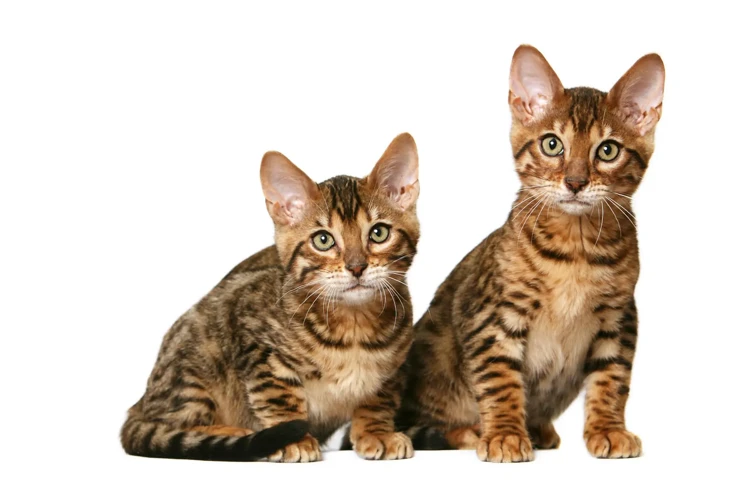
When we think of domestic cats, we tend to imagine soft and cuddly creatures that curl up in our laps. However, the California Spangled Breed is a unique cat that has a wild ancestry. The California Spangled Breed has evolved over time, thanks to its wild cat ancestors, which can be traced back to several different species. In this section, we will explore the fascinating and varied origins of the California Spangled Breed and the wild cats that have influenced its genetic makeup.
The Asian Leopard Cat (ALC)
One of the most significant wild cats that has influenced the genetic makeup of the California Spangled Breed is the Asian Leopard Cat (ALC). The ALC, scientifically known as Prionailurus bengalensis, is a small wild cat native to Southern Asia.
This wild cat is particularly valuable for cat breeding because of its striking spots that have been passed down to the California Spangled Breed.
– The ALC is a solitary creature that prefers densely forested areas, which is why it’s often found living in bamboo thickets and rainforests.
– In addition to its striking spots, the ALC has unique physical characteristics, including elongated legs, a small head, and a muscular body to help it move swiftly and stealthily.
– Over the past few decades, breeders have utilized the ALC’s DNA to create hybrid breeds like the Bengal and Toyger.
– The ALC has also contributed to the Californian Spangled Breed’s high level of intelligence, stamina, and playful temperament.
The ALC played a significant role in creating the California Spangled Breed’s distinctive coat patterns and physical attributes that make them stand out among other cats. However, cat enthusiasts must keep in mind that breeding with the ALC must be done responsibly, as it is a wild animal that should not be exploited for commercial purposes.
The African Wildcat
The African Wildcat is one of the four wild cats that have contributed to the genetic makeup of the California Spangled Breed. This feline species, which is native to Africa, has been domesticated for over 9,000 years and is considered the ancestor of all domestic cats.
Appearance: The African Wildcat is a medium-sized cat, weighing between 5 to 9 pounds, with a short, sandy-colored coat. It has stripes on its legs and tail, but not on its body. Its ears are pointed with black tufts at the tips, and it has prominent facial markings.
Habitat and Behavior: The African Wildcat is found in savannas, grasslands, and desert regions of Africa. It is a nocturnal animal, hunting mainly at night. It feeds on small mammals, birds, reptiles, and insects and is known for its excellent hunting skills.
Contribution to the California Spangled Breed: The African Wildcat’s genetic influence on the California Spangled Breed is seen in its distinctive physical features, such as the tabby patterns and the ticked coat texture. The Spangled Breed also inherited the African Wildcat’s independent and curious personality, making it a great pet for owners who enjoy the company of an attentive and playful cat.
To summarize, the African Wildcat is an important contributor to the genetic makeup of the California Spangled Breed, and its influence can be seen in the breed’s physical appearance and behavioral attributes. Its unique features have helped make the California Spangled Breed a popular feline breed today.
The Jungle Cat
When it comes to the wild cat ancestry of the California Spangled Breed, the Jungle Cat is one of the key species that influenced their genetic makeup. This medium-sized wild cat can be found throughout Asia, from India and Sri Lanka to Southeast Asia and southern China.
Here are some interesting facts about the Jungle Cat:
- Appearance: Jungle Cats have a distinctive, elongated body with long legs and a relatively short tail. They have a tawny or sandy-colored fur with black spots and stripes, which helps them blend into their natural habitat.
- Adaptations: Jungle Cats are well-adapted to life in wetland habitats, such as marshes or swamps. They have long toes that are partially webbed, which helps them navigate through muddy environments. They are also excellent swimmers and have been known to catch fish, frogs, and other aquatic animals.
- Behavior: Jungle Cats are generally solitary animals, although they may form pair bonds during the breeding season. They are primarily nocturnal hunters and feed on a variety of prey, including rodents, birds, reptiles, and amphibians. They are also highly territorial and will defend their territory from other Jungle Cats.
The Jungle Cat’s genetic influence on the California Spangled Breed can be seen in the breed’s spotted and striped fur patterns, which resemble those of the Jungle Cat. The Jungle Cat’s adaptations for living in wetland environments may have also influenced the California Spangled Breed’s love of water and swimming, which is unusual for domestic cats.
The Jungle Cat is just one example of how wild cat species have contributed to the genetic makeup of the California Spangled Breed, resulting in a unique and fascinating breed of domestic cat.
The Geoffroy’s Cat
The Geoffroy’s Cat, also known as Leopardus geoffroyi, is a mid-sized wild cat that was named after the French naturalist, Étienne Geoffroy Saint-Hilaire. This wild cat breed is native to South America, particularly to Argentina, Bolivia, Chile, and Uruguay. The Geoffroy’s Cat is usually small and slender, with a brownish-yellow coat and unique markings that distinguish them from other wild cats.
Muscular and agile, the Geoffroy’s Cat is known for its ability to climb trees effortlessly, making it a skilled hunter and predator in its natural habitat. Like the Asian Leopard Cat (ALC), the Geoffroy’s Cat has been used in hybridization programs to create domestic cat breeds such as the Bengal Cat and the Safari Cat. The Geoffroy’s Cat has contributed to the genetic makeup of the California Spangled Breed, influencing its physical appearance and behavior.
The Geoffroy’s Cat is also an excellent swimmer, a skill that has been passed on to some of the domestic cats that possess this wild cat’s genes. This cat breed is highly adaptable and can survive in various habitats, from the desert to the forest, making it an excellent model for genetic diversity.
The Geoffroy’s Cat is a remarkable wild cat breed that has played a significant role in the history of cat breeding. Its unique characteristics and agility have been passed down to new cat breeds, including the California Spangled Breed. The incorporation of wild cat genes into domestic breeds has increased the genetic diversity of domestic cats, leading to healthier and more robust breeds.
The Influence of Wild Cats on the California Spangled Breed
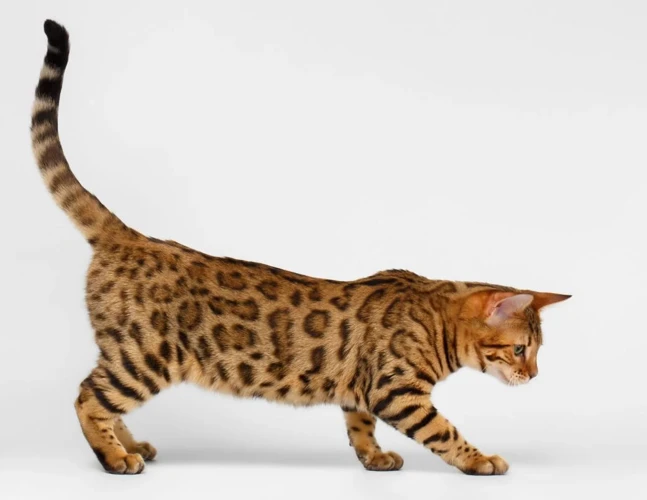
As the California Spangled Breed gained popularity, breeders sought to improve its genetic makeup by introducing wild cat ancestry. Through careful breeding and hybridization, several wild cat species were incorporated into the breed’s gene pool. This led to a significant influence on the California Spangled’s physical attributes, temperament, and health. Let’s take a closer look at the wild cats that played a role in shaping the California Spangled Breed.
The Spots and Markings of the California Spangled Breed
The spots and markings of the California Spangled Breed are a crucial element in what makes this breed so unique and visually striking. Their spots are reminiscent of those found on their wild cat ancestors; however, the California Spangled Breed manages to maintain a certain elegance and sophistication that breeds with less exotic histories lack.
The California Spangled Breed has six types of spots:
| Type of Spot | Description |
|---|---|
| Leopard-like spots | These spots are large and round with dark centers that are surrounded by lighter borders. |
| Broken mackerel lines | These spots are thin lines that run in a broken, zigzag pattern along the cat’s body, reminiscent of the markings found on mackerel fish. |
| Ticking | These are small spots that are found on the hairs themselves and give the appearance of “salt and pepper” fur. |
| Broken blotches | Similar to the broken mackerel pattern, these spots are larger and more oval in shape. |
| Rosettes | These spots are large and round, with dark spots that are surrounded by lighter borders, similar to the spots on a leopard. |
| Marbled | A pattern made up of swirls and bloches with not many open spaces in between the markings. Similar to a marble pattern you might see on a countertop! |
These spots and markings not only add to the aesthetics of the breed, but they also play a crucial role in identifying purebred California Spangled Cats. The spots and markings must meet specific criteria to be considered purebred, and any deviations from the standard can render the cat ineligible for breeding purposes or competition. Breeders have worked hard to maintain these characteristics in the breed’s genetic makeup and continue to prioritize the patterns in their breeding programs.
It’s worth noting that the spots and markings of the California Spangled Breed aren’t just for visual appeal; they also provide camouflage in the wild. The spots and patterns help to break up the cat’s outline, making them harder for predators to spot and catch. This is another nod to their wild ancestors and a testament to the ways that domestication hasn’t fully erased their genetic heritage.
The Physical Attributes of the California Spangled Breed
When it comes to the physical attributes of the California Spangled breed, there are a number of notable characteristics that set them apart. These cats are known for their striking appearance and sturdy build.
One of the most distinctive physical features of the California Spangled breed is their coat. These cats have a short, dense coat with tabby-like markings that can range from bold spots to delicate stripes. Their coat comes in a variety of colors, including black, brown, silver, and gold.
Size and Body Type: The California Spangled breed is a medium-sized cat with a muscular build. They have a broad chest and shoulders, and their legs are strong and well-proportioned. Despite their sturdy build, these cats are also agile and graceful.
Head Shape and Facial Features: The California Spangled breed has a broad, rounded head with a short, tapered muzzle. Their ears are medium-sized and set slightly apart, and their eyes are almond-shaped and can be green, gold, or copper in color.
Tail: The California Spangled breed has a thick, medium-length tail that tapers to a rounded tip. Their tail is often marked with rings or bands of dark fur.
Paws: The California Spangled breed has round, compact paws with sharp claws. They use their claws for hunting and play, but are generally gentle with their human companions.
The physical attributes of the California Spangled breed make them a unique and striking cat. Their muscular build and distinctive coat make them stand out from other breeds, while their agile and graceful movements make them a joy to watch.
The Temperament of the California Spangled Breed
The temperament of the California Spangled breed is one of its most attractive and sought after traits. These cats are known for their intelligence, affectionate nature, and playful demeanor. As a result, they make wonderful pets for families and individuals alike.
Intelligence
California Spangled cats are highly intelligent. They are quick learners and enjoy solving puzzles and challenges. This makes them great companions for those who like to stimulate their pets mentally. They have an innate curiosity that drives them to explore and seek out new experiences.
Affectionate Nature
Another endearing trait of the California Spangled breed is their affectionate nature. These cats are known to form close bonds with their owners and enjoy spending time with them. They are often described as being “dog-like” in their loyalty and devotion. It’s not unusual for a California Spangled cat to follow their owner around the house, making sure they are always nearby.
Playful Demeanor
The California Spangled breed is also known for their playful demeanor. They are active and energetic, and enjoy playing games with their owners. This makes them great companions for children and adults alike. Some of their favorite games include playing with toys, chasing balls of string, and hiding in boxes.
To summarize, the California Spangled breed has a lot to offer in terms of temperament. They are intelligent, affectionate, and playful, making them great pets for a wide range of individuals and families. If you’re looking for a loyal and loving companion who will keep you company and keep you entertained, then the California Spangled cat might be the perfect choice for you.
| Temperament | Description |
|---|---|
| Intelligence | Quick learners, enjoys solving puzzles and challenges, innate curiosity |
| Affectionate Nature | Forms close bonds with owners, loyal and devoted, follows owners around the house |
| Playful Demeanor | Active and energetic, enjoys playing games with owners, favorite games include playing with toys, chasing balls of string, and hiding in boxes. |
The Health and Genetic Diversity of the California Spangled Breed
The health and genetic diversity of the California Spangled Breed is a vital aspect of maintaining and developing a healthy breed. The breed’s wild ancestry contributes to their genetic robustness, making them less prone to certain genetic disorders compared to other purebred cats. However, like all breeds, they are still susceptible to certain health issues that require vigilance from breeders and pet owners.
One common health issue in cats is hypertrophic cardiomyopathy (HCM), a heart disease that can be inherited. It is recommended that all breeding cats are screened for HCM to minimize the risk of passing on the disease to their offspring. Another health concern in the California Spangled Breed is a genetic susceptibility to periodontal disease, which can lead to tooth loss and other oral health issues. Regular dental checkups and cleanings are necessary to prevent its development.
Maintaining genetic diversity in the California Spangled Breed is also essential for their long-term health and well-being. Inbreeding can lead to a host of health problems, including an increased risk of genetic disorders. To promote genetic diversity, breeders must carefully select breeding pairs to ensure that their offspring have a diverse gene pool. Incorporating new bloodlines into the breed is also a way to achieve genetic diversity.
Below is a table summarizing the health and genetic diversity of the California Spangled Breed:
| Health Concerns | Genetic Diversity |
|---|---|
| Hypertrophic cardiomyopathy | Selection of diverse breeding pairs |
| Periodontal disease | Incorporation of new bloodlines |
By prioritizing the health and genetic diversity of the California Spangled Breed, breeders and pet owners can help ensure a healthy and vibrant breed that will continue to thrive for generations to come.
The Future of the California Spangled Breed
As with any breed, the future of the California Spangled cat is somewhat uncertain. Over the years, the breed has faced both popularity and decline, and today it remains a relatively rare breed. However, there are several factors that point toward a bright future for the California Spangled cat.
Increasing Awareness
As more people become aware of the California Spangled breed, there is a growing interest in these unique and beautiful cats. Breeders are working to promote the breed and showcase its many positive traits, which can help build a broader base of support and increase demand for California Spangled cats.
Improved Breeding Practices
As our understanding of genetics and breeding practices continues to grow, there is hope that the California Spangled breed can be bred for improved health, temperament, and genetic diversity. Breeders can work to reduce the risk of inherited health problems, such as hip dysplasia and heart disease, while also maintaining the distinctive physical appearance of the breed.
Reintroduction of Wild Genes
Given the California Spangled breed’s wild cat ancestry, there may be opportunities to introduce additional wild genes into the breeding population. Such genetic diversity could help improve the breed’s overall health and vigor while also maintaining its distinctive spotted appearance.
New Breeding Programs
As interest in the California Spangled breed grows, it is likely that new breeding programs will emerge to help promote and sustain the breed. Such programs could help ensure that the breed remains viable over the long term and enjoys continued growth in popularity.
While there are certainly uncertainties and risks involved in breeding and promoting any cat breed, the future looks bright for the California Spangled cat. With a growing base of support, improved breeding practices, and the potential introduction of additional wild genes, this unique and beautiful breed may yet enjoy a flourishing future.
Conclusion
In conclusion, the California Spangled Breed is a unique breed of cat that has a fascinating history and a genetic makeup that can be traced back to four wild cat species. The influence of these wild cats can be seen in the spots and markings, physical attributes, temperament, and genetic diversity of the breed.
Despite the decline in popularity of the California Spangled Breed, the resurgence of interest in recent years has brought hope for its future. Proper breeding practices that take into account the genetic makeup of the breed and its wild cat ancestry can help in maintaining the health and diversity of the breed.
The California Spangled Breed is a testament to the importance of genetics in cat breeding. Its wild cat ancestry highlights the significance of preserving the genetic diversity of domesticated animals to ensure their health and survival.
As we continue to learn more about the influence of wild cats on the California Spangled Breed, we gain a better understanding of the evolution and domestication of cats. This knowledge can also help in the conservation efforts of wild cat species, which play a crucial role in maintaining the ecological balance of our planet.
Overall, the California Spangled Breed is a beautiful and unique cat breed that has left a mark on the world of cat breeding and genetics. Its history and genetic makeup serve as a reminder of the complex relationship between humans and the animals we share our planet with.
Frequently Asked Questions
Q: What is the California Spangled Breed?
A: The California Spangled Breed is a distinctive breed of cat originating in the United States. It is known for its wild appearance, beautiful spots and high intelligence.
Q: What is the history of the breed?
A: The breed was first bred in the 1970s, as an attempt to create a domestic cat that had the look of a wild cat. They became popular in the 1980s but then declined due to their high cost. However, the breed is experiencing a resurgence in popularity today.
Q: What role do genetics play in cat breeding?
A: Genetics play a critical role in cat breeding because they determine the traits and characteristics of the resultant offspring. Proper knowledge of genetics is important for breeding cats with desirable traits.
Q: Which wild cats contributed to the genetic makeup of the California Spangled Breed?
A: The Asian Leopard Cat, African Wildcat, Jungle Cat, and Geoffroy’s Cat are believed to have contributed to the genetic makeup of the California Spangled Breed.
Q: What are Asian Leopard Cats?
A: Asian Leopard Cats are a breed of wild cat that is native to parts of Asia. They are genetically close to domestic cats and have played a significant role in developing new cat breeds such as the Bengal.
Q: What is the African Wildcat?
A: The African Wildcat is a small wild cat that looks much like a domestic cat. It is believed to be one of the ancestors of the domestic cat.
Q: What is the Jungle Cat?
A: The Jungle Cat is a medium-sized wild cat that can be found in Asia and the Middle East. It has large, well-muscled legs and a relatively short tail.
Q: What is the Geoffroy’s Cat?
A: The Geoffroy’s Cat is a small wild cat native to South America. They have a characteristic spotted coat and a muscular build.
Q: What makes the California Spangled Breed unique?
A: California Spangled Breed’s unique markings are its most distinguishable feature, but it is also known for its high intelligence and playful personality. It is a highly athletic cat that loves to play and chase, and can be trained to perform tricks.
Q: Is the California Spangled Breed a healthy breed?
A: The California Spangled Breed is generally considered a healthy breed, but like any breed of cat, it is prone to some health issues. Proper care and regular visits to the vet are essential to keeping the breed healthy.

